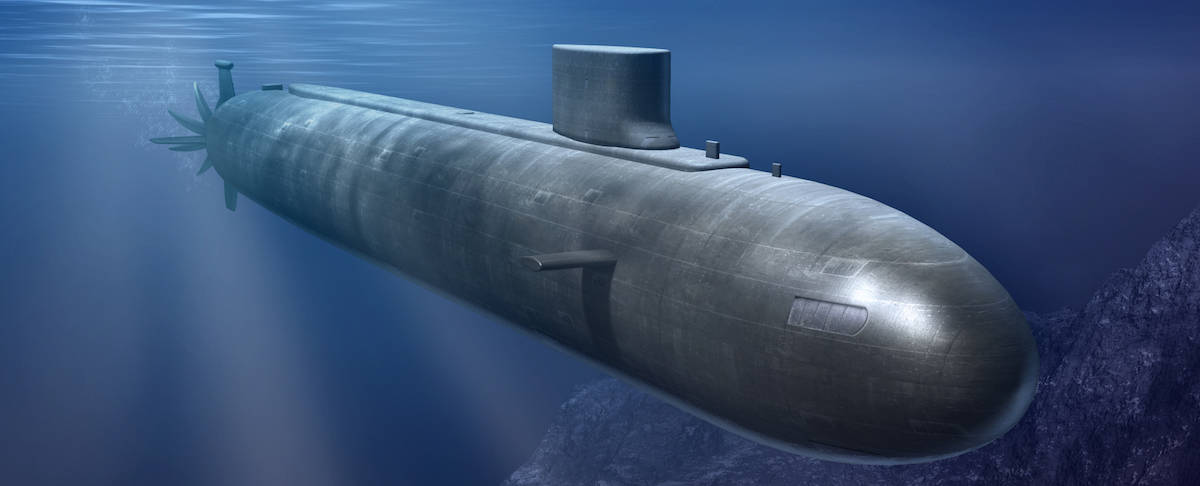When I was 12, a TV show called SeaQuestDSV began airing. Its premise was that mankind had exhausted almost all natural resources, except for the ones on the ocean floor. Many new colonies had been established there. To avoid conflicts, the SeaQuest, a hyper-sophisticated submarine, was responsible for protecting them.

I was hooked. It was like an underwater Star Trek. Every week I watched this submarine, its talking dolphin, and its crew explore the ocean floor and underwater colonies. Inspired by SeaQuestDSV, I knew I wanted a career in the ocean, so I settled on either Marine Biology (again, talking dolphin) or Ocean Engineering (submarine, seafloor exploration, underwater design).
Eventually I decided to pursue Ocean Engineering. I knew that an Ocean Engineering degree would teach me about underwater vehicles, naval architecture, instrumentation design, marine metals, and remote sensing, while also teaching me about coastal and offshore engineering, oceanography (the study of the ocean environment itself), and marine transportation. Its backbone of Civil, Mechanical, and Electrical Engineering would give me the engineering fundamentals I knew I would need.
There aren’t many schools that offered an Ocean Engineering degree. There also weren’t a lot of people who knew what it was. I was often asked “So you want to play with the dolphins?” or “So you’re going to learn about the ocean?” Well, yes, but no. Oceanography is the study of the ocean, while Ocean Engineering is creating things IN the ocean. As Theodore von Kármán said, “Scientists discover the world that exists; Engineers create the world that never was.”
I ultimately chose Florida Institute of Technology (aka Florida Tech). Florida Tech also has a strong Aerospace Engineering department, which was great, as Ocean and Aerospace Engineering share a similar backbone in fluid/air mechanics, design, and materials. We had our water wave lab (with a huge wave tank), as well as underwater technology, hydro-acoustics, coastal engineering, and naval architecture courses. The best part was our senior design project which was 2 semesters including a “mandatory” summer in Florida. We spent the summer out on research boats, using what we had learned on the water to help improve our project designs. It, along with an internship, solidified my dream of building submarines one day.
I was lucky that my advisors and professors allowed me to choose courses within the Ocean Engineering degree to continue focusing on that goal. This set me up for my first job as a Mechanical/Ocean Engineer in the nuclear construction office of Newport News Shipbuilding, helping build and design the U.S. Navy VIRGINIA Class submarine. I was one of two deck plate liaison engineers, troubleshooting problems that arose during construction and testing. Through a lot of learning, and saying “yes” to every project that came my way, I was able to parlay that experience into a job with the VIRGINIA Class program office and ultimately my current job of testing and evaluating U.S. Navy submarines. Along the way, I also earned a Masters in Engineering Management which helped me get where I am today.
Every day on the job is different depending on the needs of the fleet. One day I’ll be behind my desk analyzing data or developing test procedures, the next day I’m on a submarine troubleshooting a system, and the following day I’m briefing others on something that changes the way the Navy thinks and reacts. I work on a team of talented engineers to develop, test, install, and implement products fleet wide. Standing on that boat in the middle of the ocean, with nothing but water around you, knowing that you helped make it better is awe-inspiring. And the fact that I get to crawl around a steel jungle gym is pretty cool too!
The Ocean Engineering and Maritime communities have historically been filled with men. When I started my first job, I was the only female in my department. I was told that I was hired as an experiment; if it went well, they would hire more women. I was used to being the only woman in the room, from times as a kid working on planes in an aviation museum, to rising to commander in my Junior Air Force ROTC unit in high school, to going to an engineering school.
I learned everything I could, took every opportunity to prove myself, and was determined to be better than anyone expected. The men treated me with kid’s gloves for the first few months. Then, one morning in our daily meeting one of the supervisors got upset and let out a string of curses. Everyone in the room gasped and looked at me. I kept taking notes, then looked up and said “what!?!?” The ice was broken. Some of the men still clung to the idea that “women shouldn’t be on the waterfront” (which I heard several times). But most of the men treated me with the respect of any other of their colleagues. By the time I left that job, they had hired more women. To this day, I am still typically the only woman in the room. But I’ve learned to pick bosses that value me as a person and equally support and encourage all their employees. If I say something, they listen because it comes from experience and knowledge.
To girls considering Ocean Engineering careers here is some advice:
- Own it. You will most likely be in a room of (sometimes salty) mariners, all older than you and with more experience than you. Know what you know, but be willing to learn from them.
- Know that you bring something to the table, a different perspective, a FEMALE perspective. Diversity makes any team better. Make sure your suggestions and comments come from a place of knowledge, back it up with facts, and your assessment will have value. Remember: they hired you for a reason.
- Have the courage to apply for positions, even if you don’t meet all the qualifications. A few years ago, when Hewlett-Packard (HP) wanted to see why more women weren’t in top management positions, they made an interesting discovery: Women working at HP applied for a promotion only when they believed they met 100 percent of the qualifications listed for the job. Men were happy to apply when they thought they could meet 60 percent of the job requirements. My advice is: If it interests you, apply even if you only have 60 percent of the qualifications. You’ll learn the rest.
Day in the Life Blog Posts
Day in the Life of an Aerospace Engineer
Day in the Life of a Biomedical Engineer
Day in the Life of a Chemical Engineer
Day in the Life of a Civil Engineer
Day in the Life of an Electrical Engineer
Day in the Life of an Environmental Engineer
Day in the Life of an Industrial Engineering Student
Day in the Life of a Materials Engineer
Day in the Life of a Mechanical Engineer
Day in the Life of a Software Engineer
Author
-

SWE Blog provides up-to-date information and news about the Society and how our members are making a difference every day. You’ll find stories about SWE members, engineering, technology, and other STEM-related topics.






